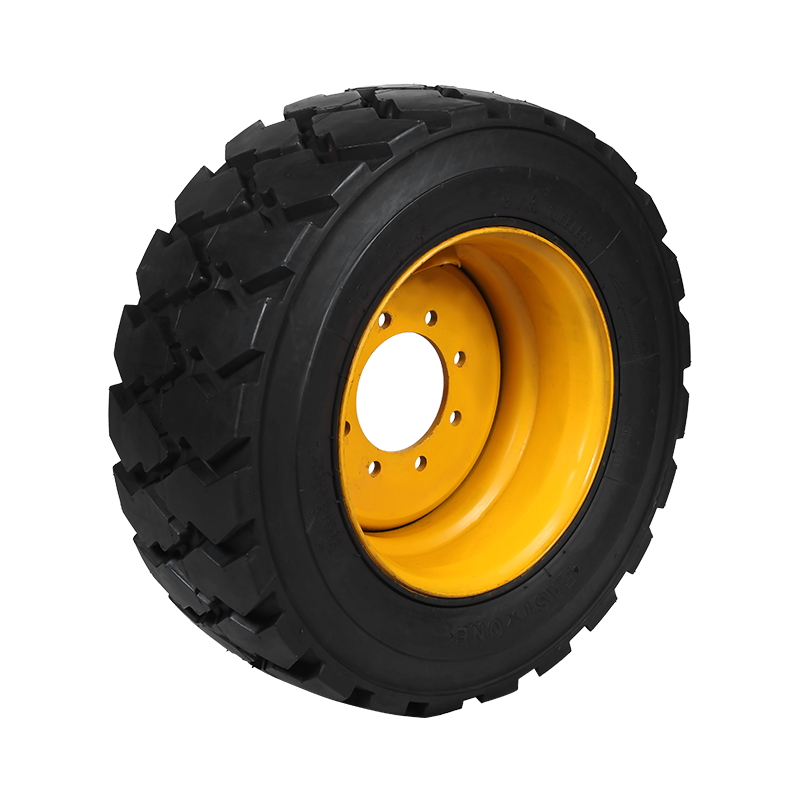Foam-Filled Tires: The Future of Tire Technology in Industrial and Off-Road Vehicles
The Emergence of Foam-Filled Tires
Foam-filled tires were first developed as a solution to the ongoing issue of tire punctures. In industries like construction, agriculture, and logistics, tire punctures can lead to significant downtime, maintenance costs, and safety hazards. Foam-filled tires provide a long-term solution by completely removing the risk of air loss.
As manufacturers and industries have adopted foam-filled tires, the technology has evolved significantly. Today, these tires are used in a wide range of applications, from heavy-duty machinery to military vehicles and off-road vehicles. The demand for foam-filled tires continues to grow, driven by their ability to meet the needs of industries that rely on robust, reliable tire performance.
What Makes Foam-Filled Tires Different?
Foam-filled tires are fundamentally different from traditional air-filled tires in that they replace the air inside the tire with a foam compound. This foam can vary in density, allowing manufacturers to customize the tire's performance characteristics to suit specific needs. The main benefits of foam-filled tires include:
Puncture and Blowout Resistance: The most significant advantage of foam-filled tires is their immunity to punctures and blowouts. Because there is no air to escape, these tires remain fully functional even when exposed to sharp objects, extreme temperatures, or rough terrain.
Reduced Maintenance: Foam-filled tires require very little maintenance. There is no need to check air pressure, perform regular tire inflation, or worry about slow leaks. This makes them an ideal solution for industries where equipment downtime is costly.
Consistent Performance: Foam-filled tires maintain their shape and structure under load, providing consistent performance throughout the life of the tire. Unlike air-filled tires, which can suffer from reduced performance due to air loss or pressure fluctuations, foam-filled tires provide stable traction and handling.
The Future of Foam-Filled Tire Technology
As tire manufacturers continue to refine the design and composition of foam-filled tires, the future looks bright for this innovative technology. Several developments are on the horizon that could further improve the performance and versatility of foam-filled tires.
Advancements in Materials: Research into new foam materials promises to improve the strength, weight, and durability of foam-filled tires. Lightweight, eco-friendly foams could further reduce the environmental impact of these tires, while maintaining or enhancing their performance.
Customization for Specific Applications: As foam-filled tire technology evolves, manufacturers are likely to develop tires tailored for specific industries. For example, agricultural vehicles may benefit from foam-filled tires that provide better traction in muddy or soft soil conditions, while construction equipment might require tires that are highly resistant to wear and tear.

Increased Affordability: As foam-filled tires become more mainstream, the cost of production is likely to decrease. This could make foam-filled tires more affordable for a wider range of industries, including small businesses and independent contractors.
Integration with Smart Technology: In the future, foam-filled tires may be integrated with smart sensors to monitor tire health and performance in real-time. These sensors could provide valuable data, helping operators identify potential issues before they lead to costly breakdowns.
Industries That Will Benefit Most from Foam-Filled Tires
The adoption of foam-filled tires is expected to grow across a range of industries, including:
Mining and Construction: These industries operate in some of the harshest environments, where tire punctures and blowouts can lead to costly delays. Foam-filled tires offer a significant advantage in terms of durability and reliability, ensuring that equipment can continue to operate without interruption.
Agriculture: Farmers rely on tractors and other heavy machinery to work in fields with rough, uneven terrain. Foam-filled tires offer better load distribution and enhanced durability, making them ideal for agricultural applications.
Military and Defense: Military vehicles often operate in hostile environments where tire damage is a concern. Foam-filled tires pro
vide a tactical advantage by ensuring that vehicles can continue to function even when subjected to extreme conditions.
Logistics and Warehousing: Forklifts and other material-handling equipment benefit from the reduced downtime and maintenance costs offered by foam-filled tires. These tires allow for smoother operations in warehouses, distribution centers, and logistics operations.
CONTACT US
-

Email: SMT001@saimeite-tyre.com
-

Phone: +86-18451337018No. 1, Renmin South Road, Yandu District, Yancheng City, Jiangsu Province, China

 English
English 한국어
한국어 Français
Français Español
Español











